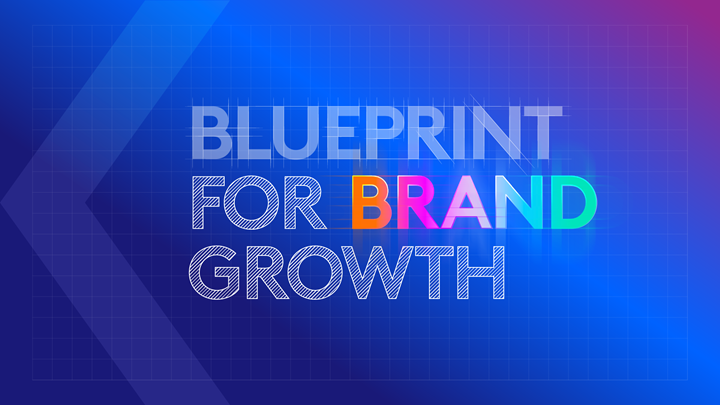1. They worked out and proved to their wider business that Pricing Power correlates with price elasticity

The power of pricing is no new news: get pricing wrong and you will forfeit 8% of your operating profit, McKinsey revealed more than 20 years ago. Yet still, only 20% of marketers consider pricing their prime responsibility - after brand, digital marketing, advertising, new products and services and on par with their sales’ responsibility.
Going against the tide, Mola and her team began collaborating more closely with sales and prioritizing pricing. They used their tracker to weekly monitor their actual price (what’s paid by consumers), their relative price (whether their price tag is higher or lower than competitors), and their Pricing Power (their perception of worth in people’s mind). As they experimented with marketing activity, all three indicators shifted. The first two regularly fluctuated, the third – Pricing Power – moved more slowly as it reflected an attitudinal shift. Six months later, they realised their brand was becoming less price-sensitive when they noticed an increase in Pricing Power.
2. They put emphasis on premium perceptions
Marketers remain under intense pressure to show unit volume growth. More budgets are shifting towards performance marketing and the average Pricing Power index of the world’s most valuable brands has declined to a new low. Many of these brands have given in to demands for short-term volume by solely focusing on salience.
But Mola’s team followed the evidence and put most of their time and effort in being meaningfully different to more people. Because this has emerged time and again as the pair of blessings for driving Pricing Power and influencing people’s willingness to pay more.
3. They reined in sales promotions
‘I am burning shareholder funds, buyers are questioning whether our brand has lost its popularity and I am a touch away from igniting the spiral of doom, but promotions sure feel good’, the average marketer ponders. Somehow, the inherent danger of promotions doesn’t scare. So much so that in November ‘24, sales on promotion reached 30% - the highest since Christmas the year before – despite seeing evidence that volume based deals have been falling out of favour. In addition to this, our recent research with Google proves that brands that don’t over-discount are 20% less price elastic than those that do.
Mola and team turned planned promotional spend into a budget line for marketing investment that would help them secure some extra shelf space. They still offered a cheaper price, but only sparingly and strategically, so it didn’t impede the rise of their Pricing Power.
4. They used brand ads to support firmer pricing
Peter Field has called out the link between quant pre-testing and Pricing Power, yet paradoxically, the use of quant pre-testing of campaigns has recently fallen among the IPA case studies and among the WARC effectiveness case studies, just 1% mention pricing impact. But the recipe exists as our research has repeatedly highlighted the importance of brand perceptions to Pricing Power, financial performance and resilience.
Differentiating campaigns nudge willingness to pay

Mola and her team ruthlessly trailed the positive impact of their advertising on their company’s stock pricing. Their first trick was to invest all their savings from price promotions into brand, the second to double down on video advertising. The more predisposed people started to feel towards their brand, the less important price became in their purchase decision.
5. They confidently increased their price by 14%
Increasing your price by x% leads to a y% drop in volume. This demonstrates price elasticity, but the value of 'y' differs among brands.
In Mola’s case, as their brand became more inelastic, people became less sensitive to their price change and their demand was less affected too.
Here are the specifics of our real case study:
Brand decreased its price elasticity by 10% >
price increased by 14% >
demand declined by 7% >
revenue rose by 7%
How would these indicators look if our brand’s price elasticity hadn’t changed?
Price elasticity remained unchanged >
price increased by 14% >
demand declined by 10% >
revenue rose by 2%
Simply put, leveraging your equity can boost your revenue by 5pp.
Low margin brand? Even more reason to take note of this
We used different margin scenarios to understand how three levels of price elasticity can affect profit. The data revealed that lower-profit margin brands (like Mola’s ~ 20% margin) would benefit more from a stronger profit growth than high margin brands.

Brand: the most important moat of your business
Warren Buffet has always been looking for businesses with a wide and long-lasting moat around them. A moat that would allow them to sustain a price increase without “a prayer session”, as he says without cracking a smile.
Over the last year, we’ve witnessed many brands successfully adjusting their prices. Despite Tide’s premium price, 15% of people still declare that it is worth more than it costs in the US. In Europe, McCain communicated consistent emotional associations through brand advertising and reduced people’s sensitivity to price changes. In the UK, Magnum’s ‘Stick to the original’ campaign successfully defended its price premium and brought back those distracted by copycats. Oral-B’s strong investment in tech expertise and consistent advertising turned them into the #1 justified premium brand in many European oral care markets. Nivea, a meaningfully different brand with a low price relative to its competitors, continued to grow volume in its face care range despite increasing prices. OUTsurance is seen as great value having improved its worth perceptions over time by making it easier for their South African customers to manage policies and life claims.
The list goes on and on. At the heart of their potent pricing endeavour is a product or service that meets people’s needs, connects with them emotionally, and stands out as different to others. A brand whose price matches their worth in consumer’s mind. And one whose promise and extra value is delivered come rain, inflation or any other crisis.
The question that remains to ask yourselves is: can your brand leverage its equity and defend a price increase without losing (too much) of its volume? Mola’s brand made it happen following a five-step plan that defined their marketing objectives for the year. It all began with the realization that Pricing Power can be used as a surrogate metric for price elasticity, a metric that should be continuously monitored to ensure sustainable, long-term success. And it ended with marketing quantifying their contribution to the business’s bottom line and gaining the worthy respect of the boardroom.
Whether you are starting now or are an established brand, our promise is this: Blueprint for Brand Growth will help you stay on track to sustainable growth and healthy profits.





